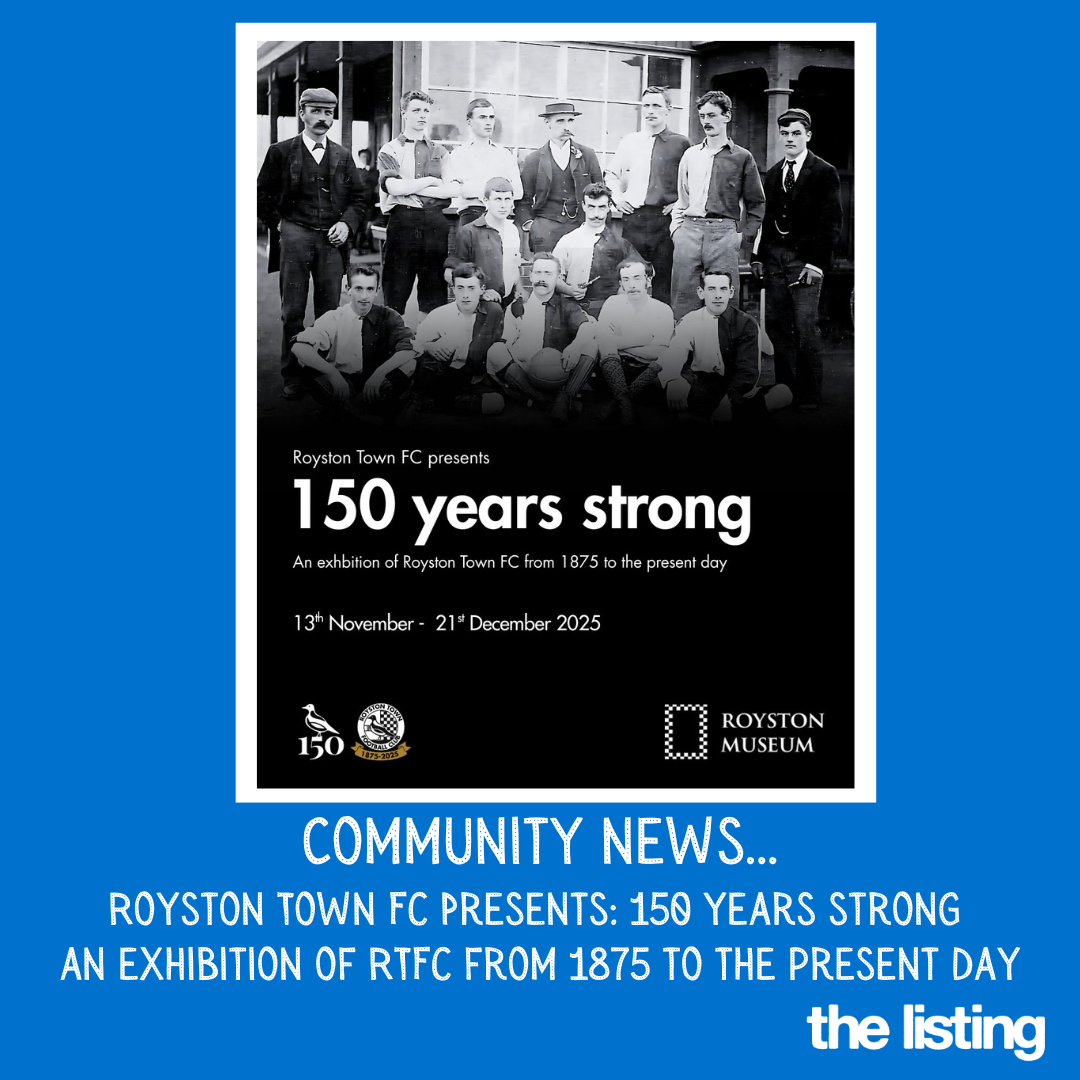Behind closed doors at Royston Police Station
Policing across Britain is changing in response to new technology, the changing nature of criminal activity and reduced resources, and Royston is no exception. Until 1896, the town actually had two police stations – one was part of the Cambridgeshire force, the other came under Hertfordshire – because the county boundary ran east-west through the centre of the town. A boundary change in the late 19th Century reduced Royston’s police station count to one. The current station in Melbourn Street has been there since 1991 but, controversially in some people’s opinion, it has been closed to the public since August 2013.
 Assessing the most effective (and cost-effective) way to police the town has parallels with judgement about the use of CCTV cameras in public places. For the public, there’s the reassurance that comes from seeing police on patrol, and a police presence can also be a visible deterrent for would-be criminals. Ultimately, success in preventing and investigating crime is likely to be a combination of ‘old fashioned policing’ by officers on the street (remember Dixon of Dock Green*?) and the use of technology.
Assessing the most effective (and cost-effective) way to police the town has parallels with judgement about the use of CCTV cameras in public places. For the public, there’s the reassurance that comes from seeing police on patrol, and a police presence can also be a visible deterrent for would-be criminals. Ultimately, success in preventing and investigating crime is likely to be a combination of ‘old fashioned policing’ by officers on the street (remember Dixon of Dock Green*?) and the use of technology.
Lee Jessup of Royston’s Safer Neighbourhood Team, based at the police station, acknowledges the impact of a lower police profile “A fear of crime may be related to the fact that people don’t see the police as often as they would like to. That’s down to resources being pulled to the areas where they are needed. But I think that most police officers would like to spend more time on the street – when you’re out and about, it’s surprising how many people want to talk to you. Most people are happy to see you and being out there builds trust.”
I’ve come to interview Lee Jessup to find out what goes on behind the now-closed Royston Police Station doors. I discover that the building in used by a number of teams, as Lee Jessup explains. “The station is used as a base for the Safer Neighbourhood Team – a number of PCs and PCSOs [Police Community Support Officers] covering Royston and the rural surrounds. The Intervention team also operate out of here; they’re part of the North Hertfordshire Intervention Team which crosses North Herts as far as Luton Airport. Intervention is the team that responds to 101 and 999 calls. The guys here try to focus on the Royston environment but sometimes get pulled out of area.”
 “Neighbourhood teams work 7am to 2am, Intervention teams 24/7, so the police station is technically operational all the time. It’s also a base for police vehicles and we have a custody block which is not currently used, but it could be reopened if necessary to house prisoners. In the past it has been used to hold individuals being taken to court.”
“Neighbourhood teams work 7am to 2am, Intervention teams 24/7, so the police station is technically operational all the time. It’s also a base for police vehicles and we have a custody block which is not currently used, but it could be reopened if necessary to house prisoners. In the past it has been used to hold individuals being taken to court.”
 Lee Jessup says the custody block is not in use, but this is not strictly true – a couple of the cells are storing items salvaged after a serious fire that ravaged the church opposite in December 2018. A clear demonstration of the many, less obvious, ways police forces serve the local community!
Lee Jessup says the custody block is not in use, but this is not strictly true – a couple of the cells are storing items salvaged after a serious fire that ravaged the church opposite in December 2018. A clear demonstration of the many, less obvious, ways police forces serve the local community!
We reminisce about the days when every police station had a front desk and a police officer behind it to deal with the public. Today, policing has to re-focus resources meaning that, in common with many other towns across Hertfordshire, Royston Police Station’s front desk is ‘non-operational’. “Calls made using the public phone outside the front of the police station go directly to the Hertfordshire forces central control in Welwyn Garden City. All calls are assessed for an appropriate response. In non-urgent cases that require a police response, the details are logged and picked up by Hitchin Police Station (sometimes Royston) from 8am to 10pm.”
We consider a past role for police station staff – taking in ‘found property’ – which was massively time-consuming in terms of logging items and storing them for a specified period; not the best use of police time. Remembering the days when (some) people would hand in cash they’d found on the street, Lee Jessup assures me… “Taking in cash is one thing we still do, but if someone finds a passport or driving licence, we encourage people to return them direct to the DVLA or passport office. Obviously, we also take in weapons that are handed in, but we don’t take in things like pedal cycles, although we keep a record of who has the bike.”
 We discuss the nature of crime in Royston – I suggest that drugs had been an issue at least in the past, and Lee Jessup faces the issue head-on. “Drug use is an issue, not just for Royston, it’s nationwide and isn’t going to go away. That leads to acquisitive crime to buy drugs – shoplifting, burglaries – not exclusive to Royston, and shoplifting can go in spates.
We discuss the nature of crime in Royston – I suggest that drugs had been an issue at least in the past, and Lee Jessup faces the issue head-on. “Drug use is an issue, not just for Royston, it’s nationwide and isn’t going to go away. That leads to acquisitive crime to buy drugs – shoplifting, burglaries – not exclusive to Royston, and shoplifting can go in spates.
Anti-social behaviour is also an issue for Royston, possibly linked to holidays, even though there’s things young people can do – with a BMX track, football fields, parks. Anti-social behaviour is certainly one of our priorities for Royston and some of that may be a question of educating parents. Work with schools is now done in partnership with other agencies and we work with charities such as The Prince’s Trust.”
“Car crime has been an issue for North Herts as a whole, not just Royston, and there’s a lesson for people – lock your car – it’s a deterrent and the property in your car will be safe. People have now stopped putting on steering locks; but if you add extra security it’s another deterrent.”
Like Constable George Dixon from the days of black and white TV, Lee Jessup ends our conversation with some advice for the public… “Look out for each other. If you see something suspicious, don’t be afraid to report it – that’s what 101 and 999 are for. We will never dismiss someone reporting what they’ve seen – it could be the small piece of a jigsaw that helps, at a later date, to solve something bigger.”
*A popular BBC TV series about a fictional London Police Station which ran for two decades to 1976













